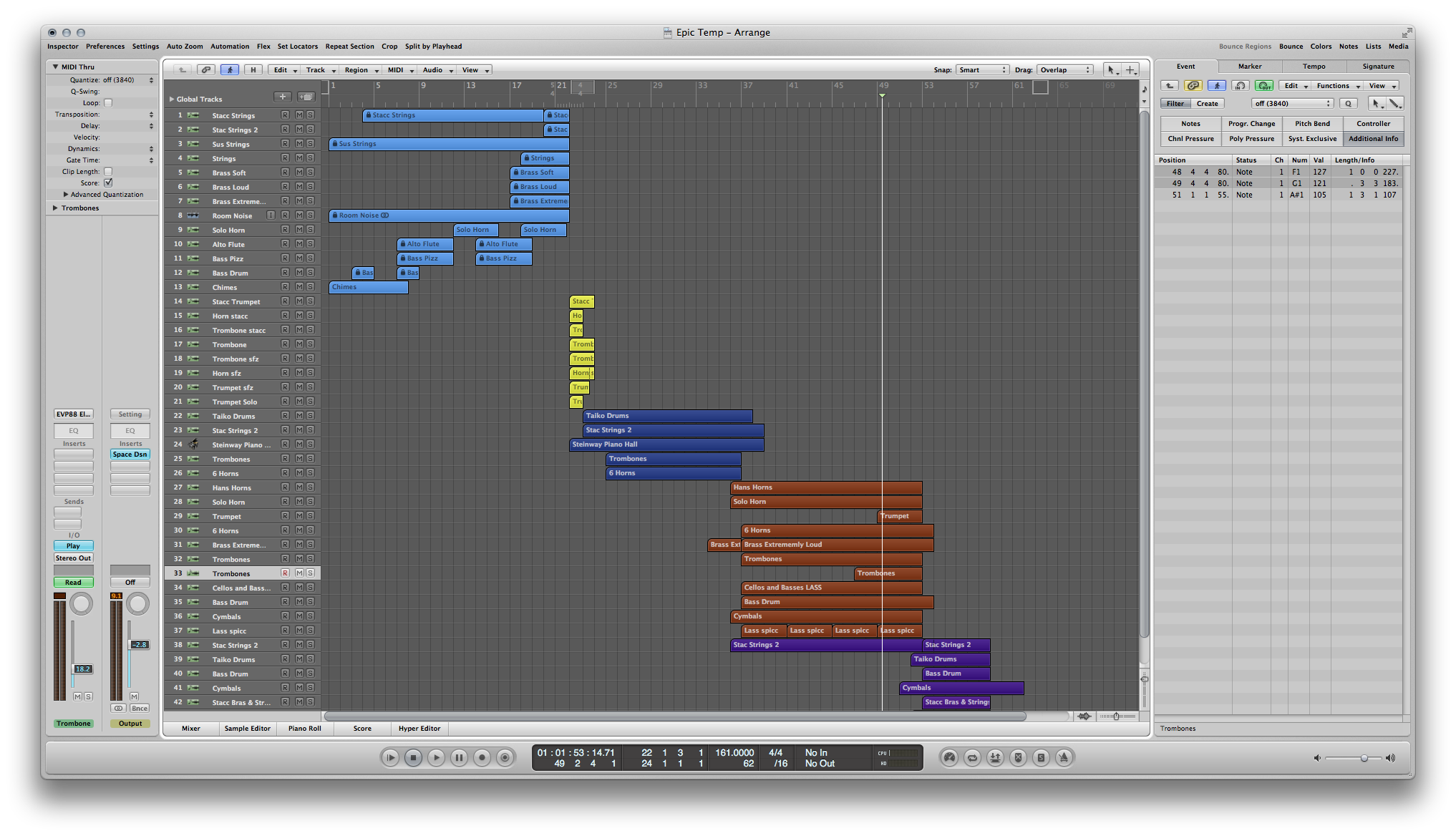
4 Elements of a Good Mix
[flickr id=”10069406643″ thumbnail=”medium” overlay=”true” size=”original” group=”” align=”none”]
When you present theme/scoring material to a client, it’s crucial that you represent yourself the very best you can through your music. It’s not enough that you wrote the best piece of music, it also has to sound the best, and that’s where your mix comes in (and by mix, I mean everything else that isn’t the actual composition). So check out four tips from a Columbia College Chicago Music Composition for the Screen graduate student:
1. Samples
The libraries you use are going to define you as a composer. You’ll be amazed how higher-end sample libraries will make your mix come alive. In my next blog post, I’ll be talking about what libraries you’ll want to check out, as well as which ones you want to avoid. Granted, it is possible to make a decent mix from lousy libraries, but the time frame you work under as a composer does not afford you that luxury. You want the process to be as fast as possible; and the less tweaking you need to do, the better.
[flickr id=”10069345586″ thumbnail=”medium” overlay=”true” size=”original” group=”” align=”none”]
If you record audio, all the better. Your style of recording, EQing, even down to the mics you use (and their placement) will help define you as a composer.
2. Mix Audio, not MIDI
Always convert your MIDI tracks to audio before you mix. MIDI is read and processed under certain algorithms that make your attacks come at slightly different times each time you play through it. By bouncing all tracks to audio (and exporting to Pro Tools), you gain a few advantages. (1) Your mix will naturally be so much more precise and consistent, (2) You have a visual reference as you are lining up audio and setting up your rhythmic material. Remember that MIDI does not always begin to play at the instant you press a button. Often there is some delay. (3) You are able to step away from “composer” mode as you mix. You don’t want to be constantly adjusting your composition while you are mixing. So step away from the MIDI and focus on mixing.
3. Awareness of Space
Young audio engineers often fail to notice the huge amount of space they can and should work with when putting together a good mix. Not only do you have frequencies (from low to high), but you also have depth (close to back) and panning (left to right). The way you utilize this space defines the environment you are performing in and can be used for an infinite number of effects. Be aware of all you have at your disposal. A good exercise is to try to recreate excellently produced music. Hans Zimmer always puts out an incredible amount of production value in each of his pieces (whether you like his stuff or not). So take one of his pieces and try to match the use of space and timbres. Oh, and good luck.
[flickr id=”10069406073″ thumbnail=”medium” overlay=”true” size=”original” group=”” align=”none”]
A word of caution about frequencies: Watch out for frequencies that get bunched up in the middle range. Most sound libraries today increase those frequencies on each individual sample. So while they may sound awesome by themselves, the more you add, the more crammed that middle section is going to get. Experiment with lowering those frequencies in the middle for certain tracks.
4. Mix with the volume turned down.
You hear a great masterpiece when you play it back at full volume, but when it goes in the film, it will be much quieter as underscore. So ask yourself (as you play it back at low volume), if you can hear the most important lines coming through predominantly. This will help focus your mix on what is most important. Also, if it’s a loud piece, does it still appear loud when you turn it down? If yes, you’re doing it right.
